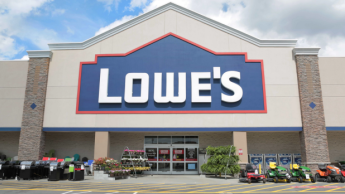
deep insights, facts & figures
27.10.2009
In America hardware, tools and many of the other products stocked as basic merchandise by home centres, hardware stores and lumber or building materials dealers can be found in all kinds of stores - from supermarkets to service stations, from drug stores to mass merchants - although the bulk of the business is, of course, still to be found in traditional retail channels
Home Channel News, a trade publication, recently provided information on the 500 largest retailers of all types selling the kinds of products stocked in traditional outlets such as hardware stores, home centres and lumber or building materials outlets. Those 500 retailers accounted for sales of US $ 237.4 bn in 2008, and ranged in size from Home Depot, the world's largest home centre chain with US $ 71.3 bn in sales, to eleven stores at the bottom of the list, each producing a modest US $ 23 mio in annual sales. The magazine said the US Commerce Department estimates the total market size at US $ 381.3 bn. In addition to these 500 firms there are thousands of other smaller hardware stores, home centres and building materials dealers serving America's 300+ mio consumers. There are more than 15 000 hardware stores, maybe 3 000 small home centres, and another 15 000 or more lumber or building materials dealers, which focus on local builders but also supply local DIYers to some extent. Reflecting the tough economic conditions, the combined sales of the Top 500 US firms declined 5.4 per cent from the preceding year. Home Depot's sales fell 7.8 per cent, whereas Lowe's, No. 2 worldwide, slipped only 0.2 per cent. Not every retailer suffered declining sales. Among those actually increasing sales were Wal-Mart, up 4 per cent overall; Menards, America's third-largest home centre chain, up 1.3 per cent; and Tractor Supply, a farm/ranch retailing giant, up 11.3 per cent; plus countless others of much smaller size. Most badly hurt were the retailers serving home builders. Stock Building Supply of Raleigh, North Carolina with 285 stores saw sales plummet by 24.5 per cent and 84 Lumber, a Pennsylvania-based building material dealer, lost nearly a third of its business (32.3 per cent) and had to close a number of stores. BMHC, a chain based in Boise, Idaho, lost nearly half its business (42.2 per cent). It too closed stores. As was to be expected, home centres accounted for the majority of sales among the retailers listed - 55.9 per cent of the Top 500 total, primarily due to Depot, Lowe's and Menards. Pro dealers (serving builders) accounted for 14 per cent. Home centre sales as a group declined 4.5 per cent, but those of dealers serving home builders (pro dealers) fell 16.4 per cent as a group. Collectively, pro dealers produced US $ 33.2 bn in sales, less than half that of Home Depot and about two-thirds of Lowe's' sales, showing just how dominant these two chains are. In its compilation, Home Channel News included flooring and décor specialty stores, paint stores and farm & fleet stores. Flooring and décor stores racked up nearly US $ 16 bn collectively, and paint stores accounted for US $ 8.5 bn as a group. The magazine estimated Wal-Mart's hard goods sales at US $ 26 bn (of a US $ 400 bn total), and Sears, with its hardware stores and other outlets, at US $ 8.9 bn. One of the more interesting classes of retailers in America these days is what is called "Farm & Fleet" or farm/ranch stores - stores located either in suburbia or smaller towns and focusing on serving the needs of regular farmers or so-called "gentleman farmers", who maintain a small acreage for gardens and some crops. They carry basic hard goods, plus larger power equipment and other needs of the farm/ranch trade. Tractor Supply is the dominant retailer in this class, even more dominant than Home Depot is in the home centre category. Additional analysis for comparison Based on Home Channel News' research, we were able to compile average sales-per-store figures, as well as sales-per-employee for the top stores in each trade channel. Virtually all retailers in America now use a large number of part-time employees. Consequently, the numbers shown in the accompanying charts understate the sales-per-employee since it considers all employees as full-timers. The per-employee performance for paint specialty retailers is more accurate since these retailers need to rely more on well-trained, full-time employees. Sherwin-Williams, America's largest paint manufacturer, produces a number of different paint brands, and sells its products through other retailers, so its numbers are distorted because of its huge employee manufacturing base. Of special interest will be the performance of three On-Line/Catalogue retailers, Northern Tool & Equipment, Harbor Freight Tools and Woodcraft Supply. Northern Tool, based in Minnesota, and Woodcraft Supply, headquartered in West Virginia, both operate a small number of retail outlets but primarily do business over the Internet and via direct-mail catalogues. Harbor Freight Tools operates far more outlets but most are little more than small, one- or two-person convenience outlets. Not having to operate long hours, as typical retailers do, enables Northern Tool and Woodcraft Supply to achieve high sales-per-employee.
Related articles
Read also

 Menü
Menü















